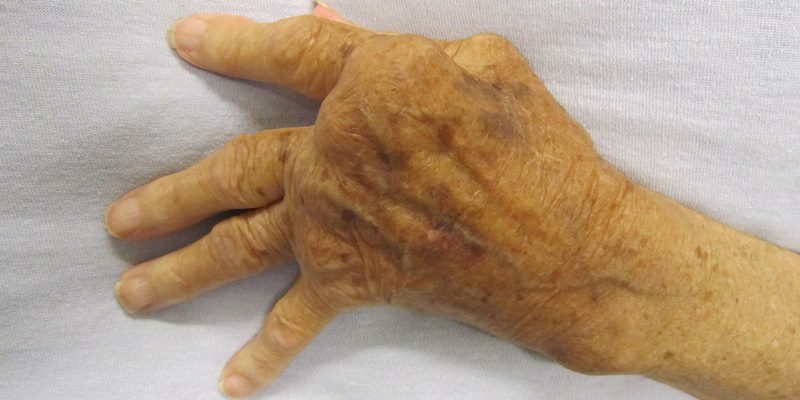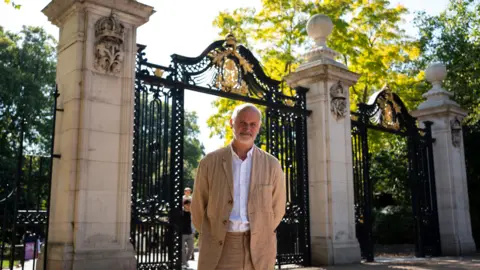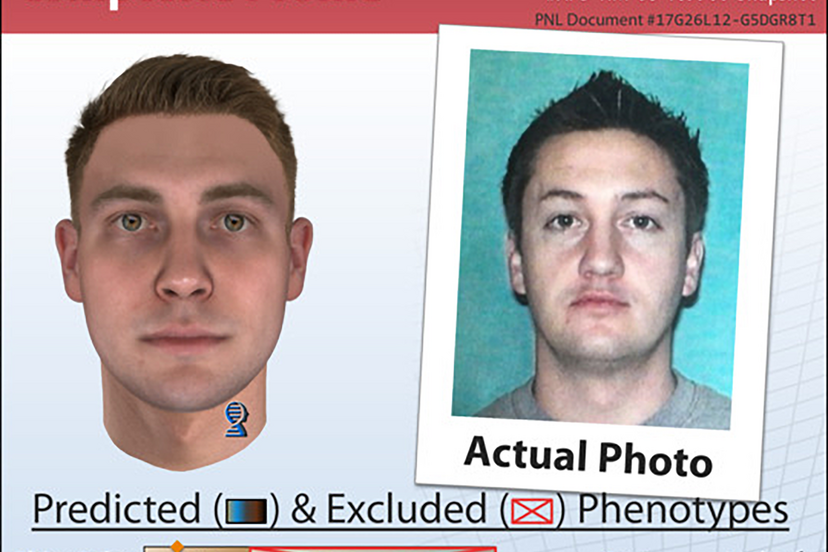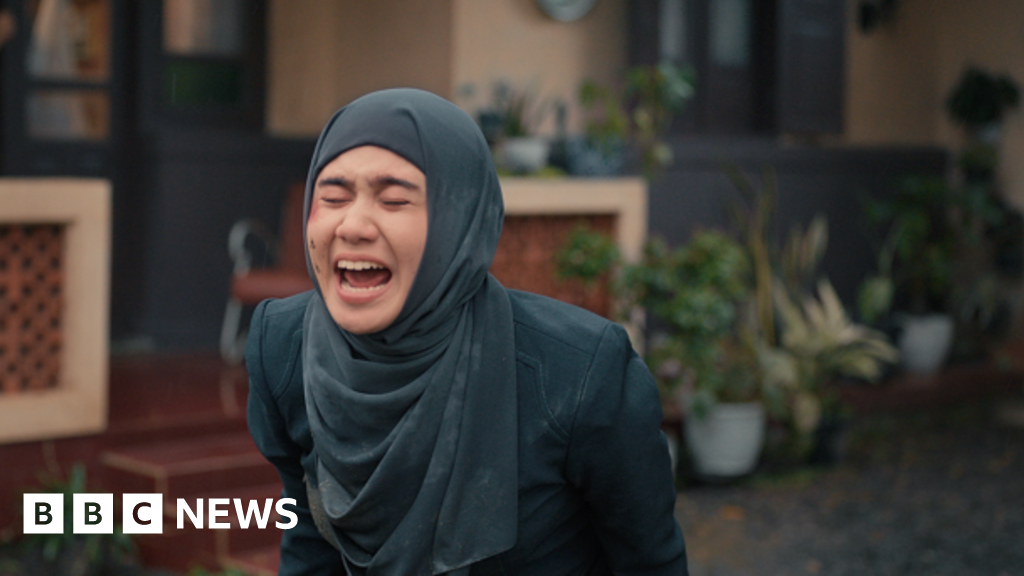Chanel Lewis in 2019 on trial for the murder of Karina Vetrano. Lewis’ attorneys believe the NYPD hired Parabon NanoLabs to generate an image from genetic material found at the scene of Vetrano’s killing, and used this to cast a “racial dragnet” that swept up Lewis. (Charles Eckert/Newsday via AP, Pool, File)
Chanel Lewis’ attorneys still don’t know what evidence led to his arrest for the 2016 murder of Karina Vetrano.
New York City police claimed that an officer recalled seeing Lewis in the victim’s Queens neighborhood two months before the killing and that the later-remembered sighting was why they tested Lewis’ DNA.
Late in Lewis’ trial, however, his defense attorneys received an anonymous letter from someone inside the New York Police Department informing them that phenotyping analysis of DNA found at the crime scene showed that the suspect was a Black male. That result is what led police to take DNA samples from more than 360 Black men, including Lewis, a fact that prosecutors never revealed.
“I was very confused about how you could do skin-tone prediction from a DNA sample such that you could conduct a racial dragnet,” attorney Rhidaya Trivedi, who took on Lewis’ case after he was convicted and sentenced to life without parole, told Law360. “I don’t understand how that’s not magic.”
Trivedi isn’t alone in questioning the accuracy of DNA phenotyping, the relatively new science of using a person’s DNA to predict their physical appearance.
The practice’s proponents call it a powerful tool to help identify suspects, particularly in cases that have gone cold, and claim that phenotyping results can even be used to create composite images of a suspect’s face.
Critics of law enforcement’s use of the technology insist that it’s still in its infancy and hasn’t been peer-reviewed, can’t accurately generate portrayals of suspects’ faces and will lead to racial profiling like the DNA “dragnet” police allegedly employed in Lewis’ case.
“It’s a significant intrusion, and if the intrusion is based on a science that’s still being fleshed out, and it’s a science that’s rooted in identity and social constructions of identity, in a country as racist as this one,” Trivedi said, “I have so many concerns about how that’s going to be used.”
Using DNA to Predict Appearance

An example of the DNA phenotyping technique offered to law enforcement by Parabon NanoLabs in Virginia, which claims it can generate an accurate estimate of a person’s appearance based on analysis of their genetic material. Parabon touts these examples on its website, and says it has permission to share this photo. (Courtesy of Parabon NanoLabs)
Trivedi and others believe the NYPD hired Virginia-based Parabon NanoLabs to conduct DNA phenotyping in Lewis’ case, although neither the police nor the lab will confirm that allegation. The NYPD has acknowledged it analyzed Lewis’ DNA, but it remains unclear exactly what type of analysis the police used or what the results were.
DNA phenotyping uses a subject’s genetic material to predict the probability that that person will have certain genetic traits, like eye, hair or skin color, which are the easiest physical characteristics to predict using the technology, according to experts. Other physical traits, such as male pattern baldness and freckling, can be predicted as well, but with less accuracy.
“In general, DNA phenotyping is when you use genetics to infer with probability and statistics the most probable traits a person would have,” explained Dr. Susan Walsh, a professor at the forensic genetics laboratory at Indiana University Indianapolis’ School of Science.
“A lot of people think of it as ‘I’m going to make one picture of this person that did it,’ and that’s not what forensic DNA phenotyping is,” Walsh said. “It’s about estimating a probability of a phenotype of a trait, and then in those combinations you might exclude a person or narrow down a list of potential people to interview.”
The technology can’t and shouldn’t be used to identify individual suspects. But it is useful for paring down a large field of suspects, according to experts like Walsh, who says that as long as investigators stick to traits like pigmentation that are scientifically valid, “absolutely it’s a wonderful tool.”
If phenotyping suggests there’s a 98% probability that a suspect has blue eyes, for instance, law enforcement knows not to waste time investigating people with brown eyes, according to Dr. Ellen Greytak, Parabon’s director of bioinformatics.
“You wouldn’t say it’s definitely not someone with brown eyes, but if you had a suspect list and you have to decide who of those 100 people to talk to first, it’s not going to be the person with brown eyes,” Greytak said.
Parabon offers DNA phenotyping to law enforcement through its Snapshot tool, which the company says can predict the probability that a person has certain physical characteristics and geographic ancestry. The tool can also potentially identify suspects by comparing their DNA to DNA in existing public databases to search for relatives, something referred to as genetic genealogy.
More controversially, though, Parabon also claims it can predict a subject’s face shape from DNA, which is called facial morphology. The Snapshot reports the company provides to law enforcement include composite sketches of potential suspects created by a forensic artist who fleshes out the information gleaned from phenotyping with characteristics such as age and weight.
While several other companies provide DNA phenotyping services to law enforcement, Parabon appears to be the only firm offering facial morphology and these composite sketches, according to experts.
Parabon’s Snapshot tool has been used in over 1,000 cases, with DNA phenotyping being employed in about half of those, said Greytak. Phenotyping alone has helped solve about 15 of those cases, the vast majority of which had remained unsolved for years.
On its website, Parabon claims its phenotyping helped identify the murderers of a North Carolina couple killed in 2012 and a 25-year-old Texas woman killed in 2016, and the man who physically attacked a 17-year-old girl in New Mexico, among others.
But Greytak declined to confirm whether Parabon played any role in the investigation or prosecution of Lewis. The NYPD didn’t respond to a request for comment on the case.
Greytak, though, insists that DNA phenotyping can be a big help to law enforcement in cases like the ones Parabon does acknowledge helping investigate.
“So many of the cases we work on, they have no witness. And we can really help them figure out it’s definitely not that person because they really, really don’t match what we would expect from this DNA,” Greytak said.
“It’s not going to tell them, ‘Yes, it’s this one person.’ But it helps them figure out what direction to go,” she added. “So if you have a big list of suspects, it can really help narrow it down.”
‘Highly Speculative’

Another example of the DNA phenotyping done by Parabon NanoLabs. (Courtesy of Parabon NanoLabs)
Walsh and other experts insist that DNA phenotyping isn’t capable of what Parabon claims it is doing, particularly when it comes to facial morphology and creating composite images of suspects’ faces.
“We’ve made some great progress in pushing forward and demonstrating better than chance, but not to any point that suggests it’s useful to make forensic DNA predictions – of the face especially,” said Penn State University professor Mark Shriver, an expert on DNA phenotyping who has worked with law enforcement.
Shriver, who filed an affidavit in support of Lewis’ effort to vacate his conviction, says he collaborated with Parabon early on but broke off the partnership when he realized the company wasn’t being scientifically rigorous.
Predicting hair and eye color is “pretty simple,” Shriver said. “But some of the facial stuff, I mean, you have to show that you can get better than chance alone, and then you have to show that those representations are useful in human observer situations. They haven’t done either one of those.”
Shriver, Walsh and others criticize Parabon for failing to publish its results in peer-reviewed scientific journals or even explain how its Snapshot system works.
And if law enforcement and courts treat the technology as a method that’s more tested and certain than it is, that could lead to wrongful arrests and prosecutions, experts worry.
“The fundamental problem is that the science just isn’t there to back it up yet. It’s highly speculative,” said Jay Stanley, senior policy analyst with the ACLU Speech, Privacy, and Technology Project. “I guess there is a theoretical future world in which DNA phenotyping becomes reliable and is peer-reviewed, but we’re not in that world yet.”
He and others also caution that DNA phenotyping could lead to racial profiling, which may be what happened in Lewis’ case.
While it’s unclear what work Parabon did for the NYPD or how that information was used by police, it does appear that law enforcement used Parabon’s conclusions as the basis for a racial “dragnet,” according to the affidavit Shriver filed in Lewis’ case.
That’s despite the fact that the preliminary investigation into the murder was actually focused on white men, according to court documents.
“If the DNA indicates that the person is Black, then that could dovetail with all the existing problems of discrimination and racism in the criminal justice system from top to bottom,” Stanley warned.
Greytak pushes back against accusations that DNA phenotyping is akin to racial profiling, calling the allegations “bizarre.”
“I just kind of shake my head in consternation every time I hear that. If a witness told you what the guy looked like, would you accuse them of racial profiling? No,” Greytak said. “It’s just factual information about a person that was at the crime scene that the police can use to investigate.”
Greytak also takes issue with those who say that Parabon’s DNA phenotyping and facial morphology can’t do what the company claims it can.
Parabon posts every composite image that’s been released publicly on its website. If a suspect is later identified, the company adds that suspect’s picture so people can see how it aligns with the composite, according to Greytak.
“They’re damn good, and they wouldn’t be if we couldn’t do what we claim we could do,” Greytak said about those composites. “So that’s sort of frustrating to us. We’ve done everything we could, we put all the evidence out there. People don’t want to believe it.”
Another reason people may not believe Parabon’s claims is that the company’s facial composites are adjusted for age, weight and other characteristics that aren’t determined by DNA.
“You can’t predict how healthy a person’s going to be, or whether or not they’ve had plastic surgery or if they’ve lived a tougher life versus a healthy life,” said Rachel Oefelein, chief scientific officer and laboratory director at DNA Labs International, which she said conducts DNA phenotyping and genetic genealogy but doesn’t create facial composites.
“A lot of the morphology stuff that’s done right now, it makes everyone the same age and makes everyone a healthy body mass index,” Oefelein added. “And we know not everyone has a healthy weight and not everyone’s 25.”
Constitutionally Suspect … and Unhelpful
Accurate or not, Parabon’s work raises serious Fourth Amendment concerns, according to Trivedi.
A law enforcement request for a suspect’s DNA has to be based on some threshold suspicion, but it’s unclear what that threshold suspicion is when it comes to Parabon’s work, Trivedi said, pointing out that no one involved in Lewis’ prosecution seems to be able to explain why the NYPD tested Lewis’ DNA.
And courts haven’t yet conducted a Frye hearing concerning DNA phenotyping, according to Walsh.
Under the Frye standard  , which is used in some state courts, including New York’s, an expert opinion based on a scientific technique is only admissible if the technique is accepted as reliable in the scientific community. But DNA phenotyping isn’t accepted by scientists as reliable, according to Walsh and Shriver.
, which is used in some state courts, including New York’s, an expert opinion based on a scientific technique is only admissible if the technique is accepted as reliable in the scientific community. But DNA phenotyping isn’t accepted by scientists as reliable, according to Walsh and Shriver.
So DNA phenotyping should never be used as the basis to convict a defendant, Walsh insisted. And the creation of composite images from suspects’ DNA shouldn’t be used at all.
“For facial morphology, we’re not predicting it yet. It shouldn’t be predicted yet because we haven’t made the models and we haven’t assessed the models correctly,” Walsh said. “It’s not something that’s possible yet.”
DNA phenotyping and facial morphology may not even be that helpful, according to Oefelein.
In fact, most of the cases Parabon claims on its website to have helped solve using DNA phenotyping seem to have actually been solved using genetic genealogy, according to experts.
“I don’t see any evidence that any of the phenotypic predictions they’ve done have helped to assist cases. It’s disingenuous to be saying that,” said Shriver, who called Parabon’s claims that its facial morphology is what’s solved those cases “just B.S.”
Genetic genealogy, also known as forensic investigative genetic genealogy, or FIGS, is the process of using a subject’s DNA to identify their potential relatives in public databases. That kind of DNA analysis is far more useful than phenotyping, according to experts.
And as public DNA databases grow, genetic genealogy will become increasingly able to identify the vast majority of people, making DNA phenotyping and facial morphology unnecessary, according to Oefelein.
Parabon’s Greytak acknowledges that in most of the cases the company works on, law enforcement is mainly seeking genetic genealogy analysis, and the company conducts phenotyping alongside that analysis.
Phenotyping alone has only helped solve about 15 cases, according to Greytak.
But, she said, that’s changing.
“We’re starting to see some agencies now come to us and say, ‘We’ve been trying to do genetic genealogy. We haven’t really gotten anywhere. Can we do phenotyping to try and get a lead from a different perspective?’” Greytak explained.
That growing use by law enforcement concerns experts and defense attorneys like Trivedi, concerns that are exacerbated by the apparent secrecy with which law enforcement has turned to Parabon in cases like Lewis’.
Police never told Lewis’ defense team which lab it turned to for DNA analysis, and prosecutors didn’t turn over any documents mentioning geographic ancestry analysis or phenotyping, Trivedi said.
She’s still waiting on a New York court to grant her an evidentiary hearing and rule on her motion to vacate Lewis’ conviction, despite filing that motion in August 2023.
She’s also still waiting for answers about exactly what kind of analysis police relied upon in the case, how that analysis worked and how police used that information.
But the fact that the technology was used at all is “extremely alarming,” Trivedi said.
“We are now handing the police, I think, not just carte blanche but a scientifically stamped carte blanche to reinvigorate racialized policing,” she added. “And I think that is the opposite direction from the direction that we should be moving in.”
–Editing by Haylee Pearl.
Have a story idea for Access to Justice? Reach us at accesstojustice@law360.com.




























